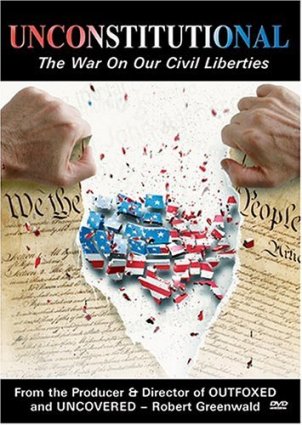Book — Non-fiction. By Howard Zinn. 2005, with a new introduction by Anthony Arnove in 2015. 784 pages.
Howard Zinn's groundbreaking work on U.S. history. This book details lives and facts rarely included in textbooks—an indispensable teacher and student resource.
Continue reading
Background Reading. By Ray Raphael. 7 pages.
Based on his book Founding Myths, Raphael critiques the textbook portrayal of the American Revolution. The textbooks say that "a few special people forged American freedom" which "misrepresents, and even contradicts, the spirit of the American Revolution."
Continue reading
Teaching Activity. By Bill Bigelow. 6 pages.
A lesson on the countless colonial laws enacted to create division and inequality based on race. This helps students understand the origins of racism in the United States and who benefits.
Continue reading
Film. 2002. 4 episodes — 56 minutes each.
Documentary on the history of the Jim Crow era.
Continue reading
Teaching Activity. By Mark Sweeting. Rethinking Schools. 4 pages.
How one teacher engaged his students in a critical examination of the language used in textbooks to describe the internment.
Continue reading
Teaching Guide. By Nancy Murray. 2006. 69 pages.
A free, downloadable, student-friendly booklet on the Bill of Rights, available in English and Spanish.
Continue reading
Teaching Activity. By Gayle Olson-Raymer. 16 pages.
Questions and teaching ideas for Chapter 5 of Voices of a People's History of the United States on the Revolutionary War as "a rich man's war and a poor man's fight," as well as the failure of early Americans to complete a full revolution.
Continue reading
Teaching Activity. By Gayle Olson-Raymer.
Questions and teaching ideas for Chapter 6 of Voices of a People's History of the United States on the early women's movement, including their efforts for social, racial, and political equality.
Continue reading
Teaching Activity. By Bill Bigelow. 17 pages.
A role play allows students to examine issues of race and class when exploring both the accomplishments and limitations of the Seneca Falls Convention.
Continue reading
Article. Background reading for teachers. By Bill Bigelow. 4 pages.
A review of Freedom's Unfinished Revolution, a collection of primary documents for high school on the Civil War and Reconstruction.
Continue reading
Teaching Activity. By Bill Bigelow. Rethinking Schools. 7 pages.
A companion lesson to the Eyes on the Prize segment on school desegregation.
Continue reading
Teaching Activity. By Gayle Olson-Raymer.
Questions and teaching ideas for Chapter 16 of Voices of a People's History of the United States on domestic opposition to the "good war" and the impact of McCarthyism.
Continue reading
Teaching Activity. By Tasha Boettcher.
Questions and teaching ideas for Chapter 17 of Voices of a People's History of the United States on the long Civil Rights Movement in America.
Continue reading
Teaching Activity. By Jack Bareilles.
Questions and teaching ideas for Chapter 19 of Voices of a People's History of the United States on the emergence and legacy of the 1960s counterculture, as well as the movements it helped create.
Continue reading
Book — Non-fiction. By Stephen Pimpare. 2008. 322 pages.
A vivid description of poverty from the perspective of poor and welfare-reliant Americans, from the big city to the rural countryside.
Continue reading
Book — Non-fiction. By Ellen Miller-Mack, Craig Gilmore, Lois Ahrens, Susan Willmarth, and Kevin Pyle. 2008. 104 pages.
This comic book presents the human stories behind the statistics.
Continue reading
Film. By Nonny de la Peña. 2004. 69 minutes.
A documentary that investigates the ways in which the civil liberties of U.S. citizens and immigrants have been rolled back since 9/11/2001 and the passage of the Patriot Act.
Continue reading
Book — Non-fiction. By Ray Raphael. 2003. 288 pages.
The events leading up to the American Revolution.
Continue reading
Book — Non-fiction (with CD). Edited by William H. Chafe, Raymond Gavins and Robert Korstad. 2008. 346 pages.
Extensive oral history of African American life under segregation.
Continue reading
Book — Non-fiction. By Richard Kluger. 2004. 880 pages.
One of the first texts, now a classic, on Brown v. Board of Education.
Teaching Activity by Richard Kluger
Continue reading
Audio. By Howard Zinn. Read by Matt Damon. 2003. 8 hours, 44 minutes.
Audio book version of excerpted highlights from A People's History of the United States.
Continue reading
Book — Fiction. By James Sturm and Rich Tommaso with an introduction by Gerald Early. 2007. 96 pages.
Told from the point of view of a sharecropper, this narrative in graphic novel format follows baseball champion Satchel Paige as he travels throughout the segregated South.
Continue reading
Book — Non-fiction. By Philippa Strum. 2010. 186 pages.
Description of a pre-Brown v. Board desegregation court case involving Mexican-American families.
Continue reading
Book — Non-fiction. By Jeffrey Haas. 2019. 400 pages.
The life and murder of Fred Hampton as told by Jeffrey Haas, co-founder of the People’s Law Office and attorney for the plaintiffs in the federal suit Hampton v. Hanrahan.
Continue reading
Film. By Frank Abe. 2000. 57 minutes.
In World War II, 63 Japanese Americans refused to be drafted from a U.S. concentration camp.
Continue reading
























